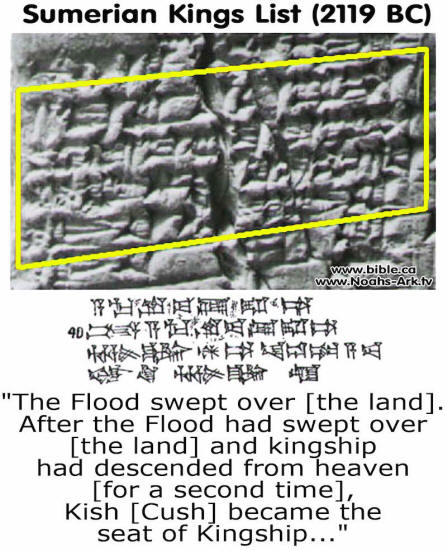|

by Ivan Petricevic
27 November
2017
from
Ancient-Code Website
Spanish
version

According to the
Sumerian King List, Eridu was the
first city in the World.
The opening line reads:
"[nam]-lugal an-ta
èd-dè-a-ba
[eri]duki nam-lugal-la"
"When kingship from heaven was lowered,
the kingship was in Eridu."
Eridu (Coordinates: 30°
48' 57.02" N - 45° 59' 45.85" E) was an ancient city in southern
Mesopotamia, 24 kilometers south of Ur in the current archaeological
site of
Tell Abu Shahrein.
Eridu, also
transliterated as Eridug, could mean "mighty place" or
"guidance place" according to scholars who say this archaeological
site is of great importance.
At its foundation, it was most likely within walking distance of the
Persian Gulf; however, currently, due to the accumulation of silt at
the shoreline over the millennia remains of Eridu are now some
distance from the gulf at Abu Shahrain in Iraq.
Some scholars argue that in ancient Sumerian times Eridu was linked
to the estuary by means of channels and according to the Babylonian
epics, it was the first city created in the world.
As noted by Sumerian mythology, the ancient city of Eridu was ONE
of the FIVE ancient cities built on Earth before
the great deluge.
Eridu was the most southern city of the conglomerate of Mesopotamia
and important center of the cult to the God of the water, Enki.
In July 2016, UNESCO chose the archaeological site of tell Eridu as
a Mixed Heritage of Humanity, as,
"part of the
archaeological remains of Sumerian settlements in Lower
Mesopotamia, which flourished between the third and fourth
millennia BC in the delta formed by the Euphrates and Tigris
rivers."
As noted by ancient
Sumerian tradition, as well as the Sumerian King list, Eridu was the
oldest of the cities of Mesopotamia, in whose location the god
Marduk had created the world.
Archaeologists have proven, through research in the twentieth
century, that the lower levels of the city (level XIX) date back to
at least 4900 B.C., at the beginning of the
El Obeid period.
Mainstream scholars
suggest the city was founded in the 54th century BC.

Egyptologist David Rohl
has conjectured that Eridu, may have been
the original Babel and site of the mythical Tower of Babel,
rather than the later city of Babylon.
Image Credit: Shutterstock.
In this first stage, the ceramic remains show a significant role of
Eridu in the region.
Towards 3800 BC (level VI) the city had an important temple and a
cemetery from which a thousand graves have been discovered.
Towards the year 2500 BC., during the archaic dynastic, a ruler,
perhaps of the first dynasty of Ur, built a great palace in Eridu,
and at the end of the III millennium BC, during the reign of Amar-Sin,
a large ziggurat was built in the city, which remained an important
religious center in the empire of the third dynasty of Ur.
According to the Sumerian King list, the first 'mythological' kings,
successors of the reign of heaven, are those of Eridu.
The king list continues:
In Eridu, Alulim
became king;
he ruled for 28800
years.
Alalngar ruled for
36000 years.
2 kings; they ruled
for 64800 years.
Then Eridu fell and
the kingship was taken to Bad-tibira.
The Sumerian King list
describes in unprecedented detail a time when the world was governed
by beings referred to as 'Gods' for thousands of years.
This is one of the main
reasons why mainstream scholars suggest that the Sumerian King list
is a mixture of prehistorical and mythological accounts and that
those rulers who lived through implausibly lengthy reigns were not
real, and were part of ancient folklore.
Mainstream scholars see the age a ruler allegedly governed over the
people as a reflection of his or her importance. The more years a
king ruled, the more important he was.
However, this is highly
debated among many authors.
This ancient city was one of the most important settlements in
ancient times, and the urban nucleus of Eridu was Enki's temple,
called House of the Aquifer.
|



